If you purchase an independently reviewed item through our site, we earn an affiliate commission. Read our affiliate disclosure.
An apiary electric fence is a very effective way to keep bears away from beehives. Many beekeepers use electric fences all year round to ensure their beehives do not come under attack by a bear. These electric fences are made by different manufacturers. They each have their strengths and weak points. In addition to bears, electric fences keep out many other large and small animals from getting to your apiary. They are great for beehive security. This article looks at the best apiary electric fences for bears and how to install them.
How Bears Affect Beekeeping Activities
Bears are a significant threat to beekeeping in many areas. They love the high carbohydrate content of honey for their energy needs. The larvae and eggs of honeybees make a rich source of protein for the bear. Smells coming from the beehive are the biggest giveaway of the beehive’s position to bears. They find the beehive and open it up. Bee stings can inflict pain on bears, but the bear often withstands the stings to reach the honey and larva in the beehive.
Beehives are likely to see bear attacks in early spring and autumn. In spring, bears are coming out of hibernation and have depleted the fat in their bodies over winter. They seek out the high carbohydrate and protein they can get from raiding beehives. In autumn, bears attack beehives in an attempt to get food to build up their reserves for winter. Bears have to eat a lot and store up enough fat for insulation and energy production over winter. They are not able to gather food and store it, so they have to eat it all before winter.
Overview of the Best Apiary Electric Fences for Bears
7. Premier Electric Goat Net Fence
Secure your beehives using the Premier Electric Sheep net fence yellow that installs in less than 20 minutes. The fence is effective in repelling both domestic and wild animals such as pigs, cattle, coyotes, dogs, goats, foxes, sheep and bears. The Premier electric sheep net fence yellow is easily seen by animals and they often avoid it due to its bright yellow color. It stands 42 inches tall and comes in a roll that is 164 foot long. This is enough height to keep bears from being able to jump over the fence. Additionally, the long roll covers a long section of your apiary’s perimeter.
There are 8 strands of wire running horizontally in this electric fence. In making the fence, the manufacturer weaves stainless steel conductor into polyethylene strands for the top 7 horizontal strands from the top. The horizontal strands are spaced from each other at varying intervals. An interval of 6 inches is used between the wire nearest to the ground and the next wire. The next horizontal wire intervals going further from the ground are 3 inches, 4 inches, 6 inches, 6 inches and 6 inches. Vertical strings are also used in this fence for additional strength and performance of the electric fence in keeping bears from your apiary.
Pros
- When properly energized, this fence does not allow any animal through it without shocking the animal due to the small size of the mesh between wire strands.
- Premier electric sheep net fence yellow is durable and well crafted. At connections of vertical and horizontal strands, molded plastic beads that do not slip are used for best electrical safety and effectiveness of the fence.
Cons
- This electric fence kit is sold without an energizer. It requires you to purchase the energizer separately and install it on the fence. Beekeepers should be very keen to use the correct energizer for best results securing your apiary from bears. Click here to see the available electric fence chargers.
6. Premier ElectroStop Electric Fence
The Premier ElectroStop electric fence is a net fence for protection of spaces from animals. It is popular among beekeepers protecting their apiaries from bears. The fence is made of a net that is 164 inches long. Vertical struts are included in the net to keep everything from sagging. The struts are made using plastic. Posts for supporting the net of this electric fence are included upon purchase. They are useful for setting up the fence around your apiary. With this fence, you can purchase additional rolls of electric fence netting to add the length of the fence. This allows the fence to be used by both small scale and large scale beekeeping operations. You can use with many beehives, or with just a few beehives in your apiary.
This electric fence for apiary security against bears can be given additional strength by using support posts. The manufacturer recommends that the support posts for additional strength be made of a material that does not conduct electricity. The posts that come with this electric fence are of the FiberTuff type. The manufacturer recommends use of support posts over guy lines. This is because guy lines often need removal when mowing around them for fence maintenance.
Pros
- This electric fence is easy to setup and move. You can use it as a permanent electric fence or a temporary one around your apiary. The fence takes approximately 15 minutes only to set up with one roll of netting.
- Carrying out maintenance tasks on this fence is easy when the fence is properly set up.
Cons
- The electric fence does not come with an energizer. You are required to purchase an energizer separately. The best energizer is an intermittent pulse energizer. You should not use a continuous current energizer with this electric fence. Click here to see the available electric fence chargers.
5. Bear Shock UDAP Portable Electric Fence
This portable electric fence is approved for food storage. It meets the recommendations of the USDA Forest Service for repulsing wild animals. As such, it is effective against bears. This makes the fence useful in beekeeping where it is used by beekeepers to protect apiaries from bear attacks. Bears can raid beehives in search of honeybee larvae and honey. They cause a lot of damage to beekeeping equipment and losses to the beekeeping operation.
An energizer is included in this electric fence. The energizer features an efficient electronic circuit that is reliable and allows for long battery life. DC power is used with the energizer supplied upon purchase of this electric fence. The fence requires 4 batteries of the AA size and 4 batteries of the D size. These batteries are not included upon purchase however. Good quality batteries last at least 3 weeks with continuous operation of the fence. Intermittent use gives more battery life.
The Bear Shock electric fence is easy to set up and install around your apiary. The fence mesh is specially designed by UDAP Industries Inc. It conducts electric current well and shocks animals touching it. This mesh is long lasting and withstands outdoor use very well.
Pros
- The mesh on this electric fence is very well designed. It is durable and conducts electricity well.
- This portable electric fence kit comes with an energizer. It makes the kit a complete solution for beekeepers wanting an electric fence for their apiaries.
Cons
- The size of the included mesh in the Bear Shock portable electric fence is small. It cannot go around more than a few beehives.
4. Premier Electric Goat Net Fence
This is an electric net fence for use with animals. While it is sold as being for use with livestock especially goats, the fence can also be used with wildlife. Indeed, beekeepers use the electric fence to keep animals including bears out of their apiaries. The electric fence is built in the net style. It features both vertical and horizontal runners and is easy to use. It is installed in approximately 15 minutes the first time you try it. You can take less time when you will be installing it next. This fence can be used as a temporary bear defense measure or installed permanently. For a permanent installation, make sure to use supporting posts of suitable strength.
The Premier electric goat net fence comes with PVC posts fitted into the net at intervals of 13.5 inches. The posts are useful in preventing sagging of the net in this electric fence. They also hold up the net at the ends of the fence to set up a perimeter for you. You are allowed to use supporting posts in addition to the PVC posts included with the electric fencing net. The additional supports you use should not be capable of conducting electricity for best performance of the electric fence.
This fence uses an electric fence energizer. However, the energizer to use is not included in your purchase of the electric fencing net. You should use an intermittent pulse energizer with this Premier electric fence. A continuous current energizer should not be used with the fence. Click here to see the available electric fence chargers.
Pros
- You can use more than one roll of net with this electric fence.
Cons
- Using this fence requires you to have an energizer for it. However, the manufacturer does not include a suitable electric fence energizer with the net on purchase.
3. UDAP BEF Bear Shock Electric Fence
The UDAP BEF Bear Shock electric fence is a high quality equipment for use in protecting spaces from animal intruders. It can also be used to beef up security against human trespassers. Beekeepers use this electric fence for apiary safety and security. This is a wire strand electric fence. It promises efficient and effective working in all environments. The fence shocks bears and other animals attempting to go past it. This fence is effective and delivers great results in both dry and wet conditions.
This electric fence comes in form of a kit. You assemble it on site into the complete electric fence. In the kit, everything you need for a complete electric fence is included. There are 3 rolls of wire strand included, an energizer, clips, hot jumpers and insulators among other items included in the kit. This makes the kit a complete solution for beekeepers that want an electric fence around their apiaries.
Pros
- This is a portable electric fence. It is great for protection of temporary apiaries such as when travelling with bees.
- Beekeepers can also set up this fence with permanence in mind. Supporting posts or poles of the correct strength should be used with this fence. Four are enough when the fence is temporary. More posts to support the fence are needed when it is used as a permanent fence.
Cons
- This fence does not come with supporting posts or poles for its setup and installation. You have to buy the posts separately. Beekeepers setting up their first electric fence can have a difficult time settling on the best posts to support this wire strand electric fence.
2. Premier Bear QuickFence Electric Net Fence
The Premier Bear QuickFence is an electric net fence that repels many animals including bears. It works in both dry and wet conditions. This makes the fence ideal for electric fencing of apiaries. The net used in this fence is made of highly conductive materials. The fence also includes some drivable posts.
The manufacturer of the Premier Bear QuickFence electric net fence recommends using non-conducting reinforcements for the fence posts, where you find that it is necessary to add reinforcements. Setting up this electric net fence around your apiary is easy. It takes about 15 minutes. More than one net can be used to complete the perimeter of the fence.
An electric fence charge energizer is not included upon purchase. You should therefore purchase an electric fence energizer separately. This fence is best used with an intermittent pulse energizer. You should not use a continuous current energizer with electric net fence. Click here to see the available electric fence chargers.
Pros
- This electric fence is easy to set up. It does not take up a lot of time to position the supporting poles and mount the net onto them.
- The fence comes with supporting posts for the net. These are useful for positioning and they hold the net up well. Additional posts can be used to add strength to the fence.
Cons
- This apiary electric fence for protection against bears includes a net and support posts. However, it does not come with an electric fence charger. You need to purchase a suitable charger separately. This can be difficult for beekeepers setting up their first electric fence.
1. Premier ElectroStop Plus Starter Kit White Electric Net
Beefing up security for your apiary from bears is very well provided for by the Premier ElectroStop Plus Starter Kit White Electric Net. It is a complete kit that comes together to give you a fully functional electric fence around your prized beehives, bees and other apiary contents. The manufacturer of this electric fence kit has included all the essential parts of an electric fence such as posts and an energizer. Also included in the package delivered to you upon purchase, are a wireless fence tester, double spiked posts and a U-shaped ground stake. A prefabricated fence net is included and it arrives already mounted onto the posts.
The Premier ElectroStop Plus Starter Kit White Electric Net is easy to setup. It can be used with ease by both beginner and experienced beekeepers. The electric fence kit needs approximately 15 minutes for setting up. It then keeps bears, coyotes and other unwanted animals from entering your apiary area. This fence comes with a warranty of 2 years for the solar panels and the energizer included in the kit. When setup, the fence from goes round an enclosure measuring 25 x 25 feet.
Pros
- This electric fence comes in one complete kit. It allows you to make a single purchase and secure your apiary. This saves you important time that would be used up researching varying components and constituents of an electric fence.
- Beekeepers that are setting up their first electric fence for an apiary are well suited by this kit. That it comes in one complete kit gives you high surety that all the parts are compatible with each other.
Cons
- The fence is 100 feet long. When you have a longer perimeter to fence in your apiary, adding electric netting in this fence may strain the energizer included in this electric fence kit. It may leave your apiary not properly protected from bear attacks.
How to Install an Apiary Electric Fence for Bears
Beekeepers can construct various types of electric fencing to keep bears from entering their apiaries. The two most popular types are wire strand and net electric fences. The choice of electric fence depends on various factors including the beekeeper’s budget, the prevalence of bears in the area and permanence of the apiary location among others. When working on a limited budget, you cannot spend much on the materials and setup of your electric fence. Bigger budgets allow you to purchase high quality materials and install the best electric fence for your apiary.
Having many bears in your beekeeping location requires you to have a very strong fence and not skimp on materials. Temporary apiary locations do not warrant too much investment in securing them from bears using an electric fence. Permanent apiary locations have different security demands. A permanent apiary needs to be well secured from attacks and theft. In this regard, an electric fence is a must-have feature.
A typical apiary electric fence consists of a charger, wire or netting, insulators, support posts and grounding rods. There are variations in the final fence setup due to different equipment used by beekeepers. The important thing in an electric fence is to have a reliable charger that delivers a current that is high enough in voltage, and conduct it all around the apiary. The current should not be grounded by the fence itself. Rather, one must allow bears and other intruders to do the grounding of the current for the apiary electric fence.
We’ll now discuss the steps to take to install an apiary electric fence.
1. Mark the Area
To install electric fence for bears around your apiary, start by marking out the area to encircle with the fence. You should also mark the line to be followed by the fence you will install. Positions for posts and a gate for entrance and exit from the apiary should be marked out as well. Chalk powder or other suitable markers can be used in this process. You may use differently colored markers to indicate different items on the fence such as the position of the charger, supporting posts and wires or netting.
It is best to have your electric apiary perimeter fence at least 4 feet from the nearest beehive. This helps discourage bears from reaching into the apiary through the fence. Use enough posts for the fence so that it is strong enough to withstand a bear placing its full weight on the fence. One post every 8 feet is the recommended minimum.
2. Drive Posts into the Ground
Using a suitable hammer, drive the posts into the ground. Make holes in the ground for your supporting posts for a strong apiary electric fence. Posts for this use can be fiberglass, plastic or metal. With a hole, you get a firmer fence that stays standing for longer. It can also resist being pushed in more than a fence whose posts have only been driven in using a hammer. Molded concrete posts can also be used if they have allowance for attachment of electric wires or netting. When you use concrete to add firmness to your fence support posts, allow enough time for the concrete to set and dry before disturbing the posts. A day or two should be allowed before installation of the other fence components, such as wire strands or fence netting.
3. Install Fence Netting or Wire Strands
Once your fence support posts are up or firmly driven in the ground, it is time to install fence netting or wire strands. The choice between using wire strands and net rests solely on the beekeeper. A net gives you better coverage and also works against animals smaller than bears. Wire for electric fencing is relatively cheap to buy for beekeepers. Commonly, wire of gauge 14-15 is used. In practice, 5 strands of wire are used. The lowest wire strand is set 8-inches from the ground. Other strands are spaced 8-inches apart too. Five strands are often enough to cover an area under which a bear cannot crawl, and over which it cannot jump.
Insulators are useful for when installing wire strands of your apiary electric fence. They keep the wires from touching your post. This is especially important when you use metallic support posts for the apiary electric fence. Use the appropriate insulator based on your post type. For wooden support posts, nails are often supplied for use with the insulators. It is alright to replace the nails with screws that are easier to use instead of nails.
Fence nets for electric fences come in two types. One is fully conducting while the other is not fully conducting. In the second type of electric fence net, some strands conduct electric current while others do not. The size of your apiary determines how much of electric wire strands or nets you need. Large apiaries use up more materials in their fences than smaller apiaries. This is because the fence has to cover more distance for the larger apiary. More than one net can be joined to cover the perimeter of the apiary. Wire strands are also joined or connected using a jumper to complete distances that are too big for a single roll of wire strand.
4. Using Hot Jumpers
Hot jumpers are useful for connecting wire strands and nets. They are used in all types of electric fencing. When installing your electric fence, make sure to have many hot jumpers available. They are useful for the gate assembly and at corners. Jumping current past a pole supporting the fence is easy when you use a hot jumper.
5. Set up the Energizer
Put in place your energizer. The charger for the electric fence is supplied with power using various means. In an apiary that is close to home, electricity from the mains supply can be used. Solar and other power sources can also be used with the fence charger. The charger you use should have an output that is enough based on the length of the fence and the size of animal. For bears, a charge of several thousand volts should be run in the fence. Lower voltages in your apiary electric fence give poor results against bears. Click here to see the available electric fence chargers.
6. Provide a Gate
Provide a gate for entry into, and exit from the apiary. When installing the electric fence, make allowance for going past the fence. Beekeepers use different types of gates for their apiary electric fences. A spring used on the fence gives tension to the assembly. It is great for electric fences that make use of wire strands. Before touching the fence, be sure to switch off the charger. If you do not, you could get shocked.
7. Add Grounding
Grounding is a great addition to your fence. You will need a main system grounding rod for the fence energizing charger. Additional grounding around the fence improves its effectiveness. Chicken wire is a popular grounding improver for electric fences used in apiaries against bears. It increases contact of the bear and the ground, when the bear makes contact with the electric wire. If you use chicken wire, make sure to connect it to the grounding rod you use. You can also have extra grounding rods for the chicken wire in addition to connecting it to the main grounding rod in the system. Dampness around the area for the electric apiary fence also improves grounding.
Apiary Electric Fence Maintenance
Maintenance of your apiary electric fence is important. It ensures the fence is working all the time. Vegetation near the fence should be cut to size so that it is not touching the fence. Connections should also be checked regularly to ascertain that they are working. With a properly maintained beekeeping electric fence for bears, you have great success keeping bears away from your beehives. You may practice baiting with bacon for better results with the fence. Bears smelling the bacon receive an electric shock and stay away from the fence.
Conclusion
A beehive that has been rummaged through by a bear suffers many losses. In addition to the destroyed honeycomb, depleted honey stocks and the loss of brood, bees – including the queen bee, might die in the attack. Apiary electric fences give excellent protection for against bears. Beekeepers use electric fences of various types to boost apiary security. Use these best apiary electric fences for bears (or build your own) to keep them from hurting your beekeeping operation.
Have you ever used any of the apiary electric fences discussed above? Leave a comment below and let us know.
 BeeKeepClub Resources and Guides for Beekeepers
BeeKeepClub Resources and Guides for Beekeepers

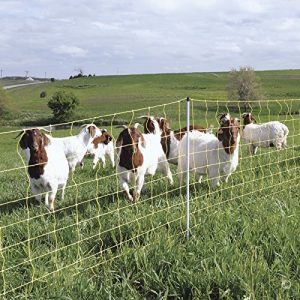


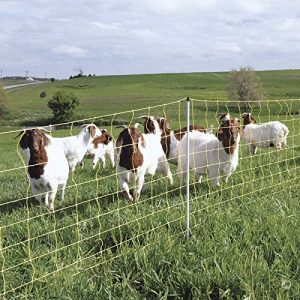

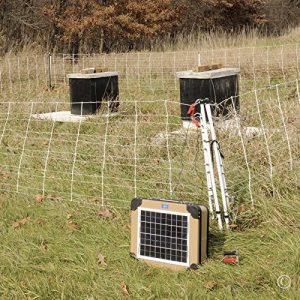
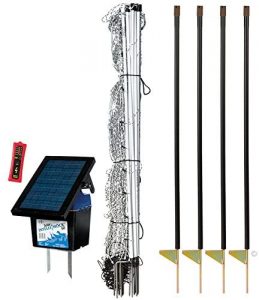
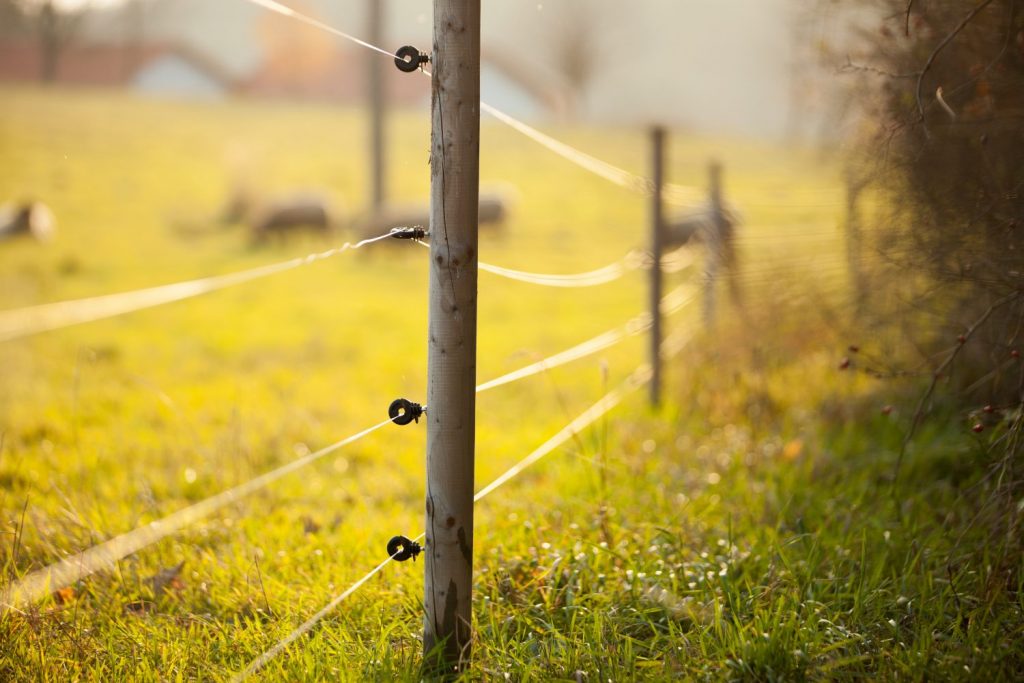
[…] Electrifying the metallic mesh adds a layer of protection to the beehive or apiary. Animals cannot stay in contact with the electrified mesh for enough periods of time to allow them to defeat the mesh. This is because they are shocked by the electric current in the electrified metallic mesh and break contact with the mesh. Shocking animals using electric current also makes some of the predators such as bears avoid the location where they were shocked. […]
[…] more than one measure to secure beehives. Strapping them down, using embedded electronic chips, fencing and using various types of security cameras are recommended. Beekeepers can also use screws and […]